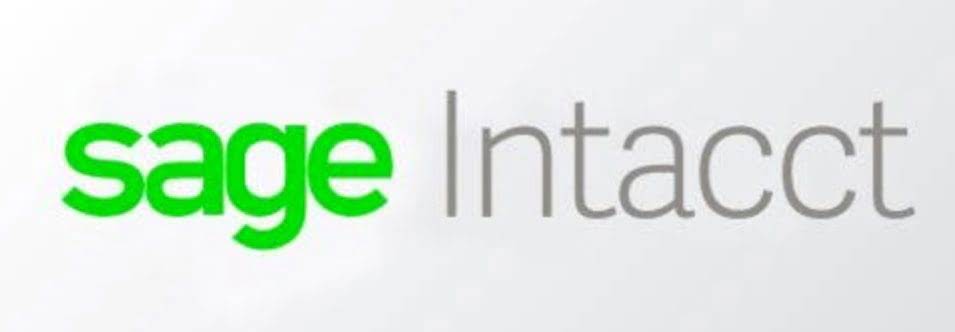
Standards like ASC 410 under GAAP require recognizing a liability and corresponding asset at the present value of estimated future costs. Technological advancements, such as data analytics and real-time monitoring systems, have improved cost tracking. These tools help identify cost drivers, optimize operations, and reduce inefficiencies. Valuation of reserves involves not just the quantity but also the quality of the hydrocarbons. Factors such as the type of crude oil, its sulfur content, and the presence of natural gas liquids can significantly influence the economic value. Additionally, external factors like oil prices, technological advancements, and regulatory changes play a pivotal role in reserve valuation.

Learn from Industry Experts
It ensures that financial information is accurate, transparent, and aligned with industry standards, contributing to the overall integrity and sustainability of the oil and gas sector. These principles, among others, provide the foundation for financial reporting under U.S. GAAP is dynamic, and the FASB continually updates and issues new standards to address emerging issues and improve the quality of financial reporting. All oil and gas companies are expected to stay current with the latest accounting standards to ensure compliance with U.S.
- Semi-annual redeterminations can challenge companies in a declining price environment, as reduced reserve valuations may limit borrowing capacity.
- Additionally, external factors like oil prices, technological advancements, and regulatory changes play a pivotal role in reserve valuation.
- Engaging consulting firms with expertise in oil and gas accounting can offer valuable insights and support for financial management initiatives.
- Companies must navigate these challenges while adhering to the OECD’s Base Erosion and Profit Shifting (BEPS) framework, which aims to prevent profit shifting and tax avoidance.
- These reports enable the non-operating partners to account for their share of the joint venture’s activities in their financial statements.
- These statements provide a detailed breakdown of costs incurred and revenues generated, which are then allocated to each partner based on their ownership percentage.
Top 5 Ways to Manage Your PA Career
Ramp helps oil and gas businesses achieve this by automating routine accounting tasks, offering real-time data syncing, and enabling easy integration. Sage Intacct is perfect for medium to large oil and gas companies that require a scalable accounting solution to handle complex operations, multiple projects, or international financials. It’s best suited for companies that need real-time insights and a system capable of managing compliance and multi-entity operations. Enertia Software is best for upstream oil and gas companies that need an integrated accounting and management solution to streamline operations and improve efficiency. Deltek is best suited for large-scale oil and gas companies that are managing complex projects and multi-entity operations.
ASC 932: Extractive Activities
One of the primary considerations in revenue recognition is the point at which control of the product is transferred to the customer. In the oil and gas sector, this can occur at different stages, such as at the wellhead, after transportation, or upon delivery to a refinery. The terms of the contract will dictate the specific point of transfer, which in turn determines when revenue can be recognized. For instance, a contract might stipulate that revenue is recognized when the oil and gas production accounting oil is delivered to a storage facility, rather than when it is extracted from the ground. This distinction is crucial for accurate financial reporting and compliance with accounting standards.

Collaborative cost management is another strategy, where companies work closely with suppliers and partners to achieve mutual cost reductions. This includes negotiating favorable contract terms, implementing joint procurement initiatives, and sharing best practices. Strategic partnerships can lead to shared investments in technology and infrastructure, driving down costs and improving operational resilience. A common approach involves using technology to streamline operations and improve efficiency. The adoption of digital tools, such as predictive analytics and automation, allows companies to identify cost-saving opportunities Bookkeeping vs. Accounting and reduce waste. For example, predictive maintenance systems can anticipate equipment failures before they occur, minimizing downtime and repair costs.

Depletion, depreciation, and amortization (DD&A) are critical components of financial accounting in the oil and gas industry, reflecting the gradual consumption of capital assets over time. Depletion pertains specifically to the reduction in the value of natural resources as they are extracted, while depreciation and amortization apply to tangible and intangible assets, respectively. Accurate DD&A calculations are essential for providing a realistic view of a company’s financial health and asset value. Explore essential oil and gas accounting practices, from cost types to revenue recognition and financial reporting standards. DD&A, production expenses, and exploration costs incurred from unsuccessful efforts to discover new reserves are recorded on the income statement. The financial results of a manufacturing company are impacted by depreciation expense for plant, property, and equipment.
- Upstream and midstream operations often involve joint ventures and production sharing agreements (PSAs), where accounting for shared resources and splitting revenues and expenses can be complex.
- COPAS Energy Education runs a number of open enrollment classroom classes throughout the year in major centers of the industry including Houston, Dallas, and Fort Worth in Texas; Denver, Colorado; and Oklahoma City, Oklahoma.
- The complexity arises from the unique nature of exploration, extraction, and production activities, which involve significant capital investment and long-term project timelines.
- We are a forum for the active exchange of ideas which result in innovative business and accounting solutions.
- The choice between SE and Full Cost depends on various factors, including company size, risk tolerance, and the regulatory environment.

The passed the Reserve Recognition Accounting method, which required oil companies to declare revenue when a reserve was discovered as opposed to when it was produced and sold. Please note, this did not settle the oil and gas debate and several rule changes occurred between 1975 and 1981. Let’s break down a couple of the accounting principles and how they affect your processes in oil & gas accounting.
- The process of calculating DD&A involves several steps, starting with the estimation of the total recoverable reserves for depletion purposes.
- The standard requires a transition to IAS 36 for impairment testing once technical feasibility and commercial viability become apparent.
- Revenue recognition in the oil and gas industry is a complex process influenced by various factors, including the nature of contracts, the timing of delivery, and market conditions.
- However, the Accounting Principles Board chose not to act or select an accounting method.
- A complete loss could make it difficult to attract lending or investors, especially with the old rule of thumb that one in four wells “hit” (or make enough to payout).
This complexity arises from diverse sales agreements, including spot market transactions, long-term supply contracts, and production-sharing agreements. Each type of contract demands a tailored approach to revenue recognition, aligning with the principles outlined in IFRS 15, which emphasizes recognizing revenue when control of goods or services is transferred to the customer. Given the sector’s volatility, companies use sophisticated models to anticipate future market conditions and potential risks. Techniques like sensitivity analysis and Monte Carlo simulations evaluate the financial impact of fluctuating oil prices, operational disruptions, and regulatory changes. These tools assist in creating financial plans that can withstand market uncertainties. Explore the essential principles and practices of SPE accounting in the oil and https://stage-oyster.cs-c.work/2022/09/what-is-a-retainer-for-a-lawyer-2025/hland2019/ gas industry, focusing on valuation, revenue, and cost management.
How do fluctuating oil prices impact revenue recognition?
This standard offers companies flexibility to develop their own accounting policies for E&E assets, but requires careful consideration. These legal obligations relate to the retirement of long-lived assets (such as oil rigs or pipelines). Estimating future costs for decommissioning and environmental restoration proves notoriously difficult due to technological changes, regulatory shifts, and extended time horizons. Integrating production accounting systems with other systems, such as finance and accounting systems, is known as system integration. Join BMC Training’s Oil and Gas Production Accounting Course today and gain the skills needed to manage financial data, control costs, and achieve success in the energy industry.
Customer Experience
These costs include labor, maintenance, utilities, and materials used in the production process. Production costs are typically expensed as incurred, directly impacting the income statement. Effective management of production costs is vital for maintaining profitability, especially in a market characterized by volatile commodity prices. Companies often employ cost-control measures and technological advancements to optimize production efficiency and reduce expenses, thereby enhancing their financial performance. Outsourcing your accounting functions with Baker Tilly can revolutionize how you manage your back office, allowing you to concentrate on your core business functions. Whether you need full-scale accounting services or seeking assistance to manage overflow work, our team can help you build a tailored solution to meet your business needs today and scale with you as you grow.
